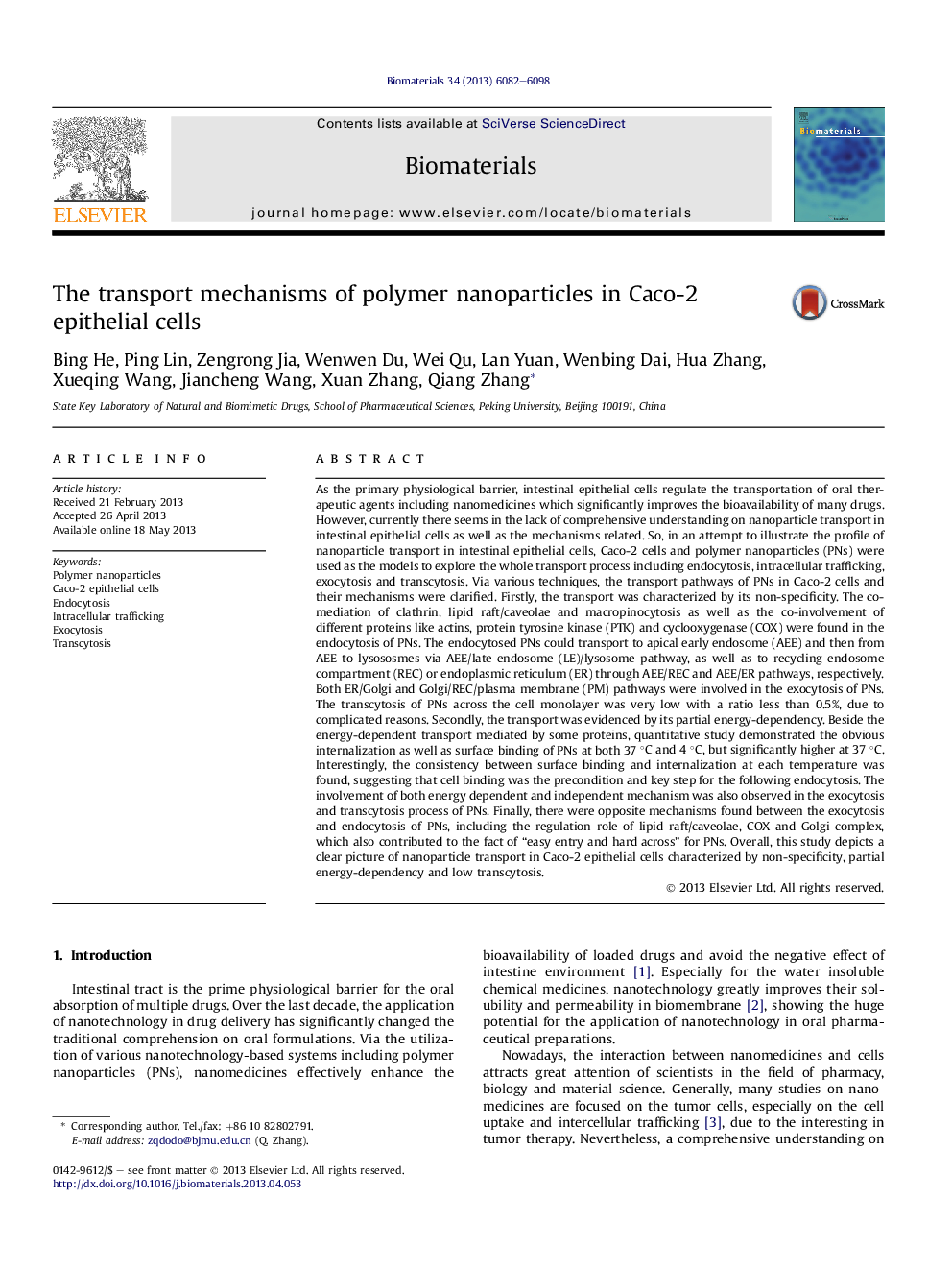| کد مقاله | کد نشریه | سال انتشار | مقاله انگلیسی | نسخه تمام متن |
|---|---|---|---|---|
| 6059 | 456 | 2013 | 17 صفحه PDF | دانلود رایگان |

As the primary physiological barrier, intestinal epithelial cells regulate the transportation of oral therapeutic agents including nanomedicines which significantly improves the bioavailability of many drugs. However, currently there seems in the lack of comprehensive understanding on nanoparticle transport in intestinal epithelial cells as well as the mechanisms related. So, in an attempt to illustrate the profile of nanoparticle transport in intestinal epithelial cells, Caco-2 cells and polymer nanoparticles (PNs) were used as the models to explore the whole transport process including endocytosis, intracellular trafficking, exocytosis and transcytosis. Via various techniques, the transport pathways of PNs in Caco-2 cells and their mechanisms were clarified. Firstly, the transport was characterized by its non-specificity. The co-mediation of clathrin, lipid raft/caveolae and macropinocytosis as well as the co-involvement of different proteins like actins, protein tyrosine kinase (PTK) and cyclooxygenase (COX) were found in the endocytosis of PNs. The endocytosed PNs could transport to apical early endosome (AEE) and then from AEE to lysososmes via AEE/late endosome (LE)/lysosome pathway, as well as to recycling endosome compartment (REC) or endoplasmic reticulum (ER) through AEE/REC and AEE/ER pathways, respectively. Both ER/Golgi and Golgi/REC/plasma membrane (PM) pathways were involved in the exocytosis of PNs. The transcytosis of PNs across the cell monolayer was very low with a ratio less than 0.5%, due to complicated reasons. Secondly, the transport was evidenced by its partial energy-dependency. Beside the energy-dependent transport mediated by some proteins, quantitative study demonstrated the obvious internalization as well as surface binding of PNs at both 37 °C and 4 °C, but significantly higher at 37 °C. Interestingly, the consistency between surface binding and internalization at each temperature was found, suggesting that cell binding was the precondition and key step for the following endocytosis. The involvement of both energy dependent and independent mechanism was also observed in the exocytosis and transcytosis process of PNs. Finally, there were opposite mechanisms found between the exocytosis and endocytosis of PNs, including the regulation role of lipid raft/caveolae, COX and Golgi complex, which also contributed to the fact of “easy entry and hard across” for PNs. Overall, this study depicts a clear picture of nanoparticle transport in Caco-2 epithelial cells characterized by non-specificity, partial energy-dependency and low transcytosis.
Journal: Biomaterials - Volume 34, Issue 25, August 2013, Pages 6082–6098